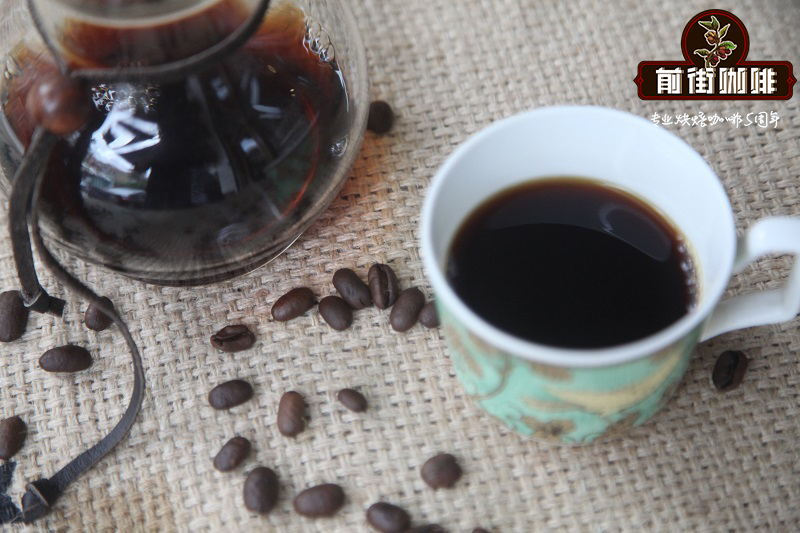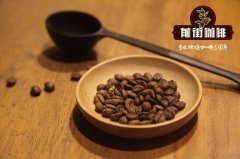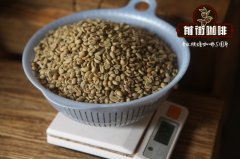Coffee Kingdom Brazil Coffee, the world's largest coffee producer and exporter

Professional coffee knowledge exchange More coffee bean information Please pay attention to coffee workshop (Weixin Official Accounts cafe_style)
When we taste a cup of coffee, you like it or remember it because it has a unique smell that attracts you, perhaps its fresh floral fruit acid, such as yega-coffee, perhaps its rich depth, such as mantadine, or like monsoon coffee. But there is a coffee, even if you have encountered it many times, but its taste is difficult to impress you, but you can not ignore its existence, it is---Brazilian coffee.
Brazil is known as the kingdom of coffee. It is the world's largest coffee producer and exporter. Coffee production monopolizes more than 30% of the world. One sixth of the world's coffee is produced here. Brazil is also the second largest coffee consumer in the world after the United States. There are about 300,000 farmers engaged in coffee cultivation here. It bears the heavy responsibility of Brazil's economic development and also affects the development of coffee in the world. The vast majority of instant coffee is made from Brazilian coffee.
Although Brazil produces 30% to 35% of the world's coffee annually, it ranks first in the world, but unfortunately no Brazilian bean can be called a top coffee. Coffee trees grow all over the mountains, in southern Brazil. Brazil is significantly lower than other coffee-producing countries in Central and South America, with farms mostly between 600 and 1,000 meters above sea level, and even the three major boutique producing areas of Minas del Sur, Serrado and Mojiana rarely exceed 1300 meters. Brazil's terrain is too flat and monotonous for coffee cultivation, lacking the microclimate that gives coffee its rich flavor factors, and is therefore more suitable for growing Kadura, New World and Kaduai without shade.
Brazilian coffee has many types, it is difficult to say what special flavor it has, there is no particularly outstanding advantages, there is no obvious disadvantage, most of the acid, taste lubrication, the main is mild smooth, mellow and sweet enough, its softness makes it mixed with other coffee beans, taste will not have too much change; and the oil is rich. Brazilian coffee beans are best blended with other coffee beans to make espresso coffee. They form a golden foam on the surface of espresso coffee and give coffee a slightly sour taste and a long aftertaste. Virtually all the big coffee roasters run blends that include some coffee from Brazil.
If coffee is considered a beautiful garment, we are interested in the material and the tailoring and workmanship that go with it. Then coffee beans themselves are like fabrics, the quality of which has been determined by the geographical environment in which they grow, and what can be added to them depends on the way coffee is picked and processed.
Although Brazil is one of the countries with the richest fresh water resources in the world, its water resources are unevenly distributed, and many areas depend on natural draft. Especially in the east where coffee cultivation is concentrated, severe drought often occurs, scarce water resources limit the way coffee is treated, Brazil almost all use rough sun method before 1990, the quality difference is very large, because coffee fruit in the process of two to three weeks of exposure, rain moisture or fruit cracking, will mold, produce odor. This also makes Brazilian beans synonymous with medium to low quality. As the world's largest coffee producer, how can we be willing to get such a reputation? In order to improve the quality and change the image, Brazil carried out a quality revolution in the 1990s and vigorously promoted the unique semi-sun method in the world.
Brazil's drier climate led to the development of semi-solarization to shorten treatment times. After removing the pulp, the pods covered with pectin layer are exposed to the sun for one to three days, and then dried by machine to a moisture content of 12%, which can be put into storage containers. Brazil's semi-sun method significantly reduces the processing time (traditional sun method takes two to three weeks), and also reduces the chance of coffee beans to be stained with odors. The quality is greatly improved. Moreover, the semi-sun method also inherits the advantages of the sun method to improve sweetness, but it has less unpleasant earthy taste, and enhances the fruity and sweet feeling, which is most suitable for single items. Therefore, the semi-sun method has become a must-have "outfit" for Brazilian fine beans, winning praise from international coffee experts.
The reforms have worked, increasing the confidence of coffee farm operators that Brazilian coffee farms will, depending on the climate humidity conditions, choose sun, semi-sun, water, semi-water or honey treatment, which has been popular in the fine coffee world in recent years, to present the best regional flavor. For example, the ultra-low humidity Minas Cerrado in the Midwest is still dominated by solarization. The manor here believes that as long as the sun method is strictly controlled, it can best highlight the unique nutty taste and sweetness of Serrado, and the semi-sun method has become a supporting role in Serrado. South Minas 'estate is the most inclusive, using semi-sun, sun and water washing respectively. Brazil has such a variety of treatment methods that it is rare in the world except Ethiopia, the hometown of coffee.
END
Important Notice :
前街咖啡 FrontStreet Coffee has moved to new addredd:
FrontStreet Coffee Address: 315,Donghua East Road,GuangZhou
Tel:020 38364473
- Prev

Exquisite sun treatment work Ethiopian water washing Gujimbela G1
Professional coffee knowledge exchange more coffee bean information please follow the coffee workshop (Wechat official account cafe_style) Shakisso is a well-known example. Humbela Manor, 2150 meters above sea level, maintains a natural balance between the virgin forest and the environment. Only harvest and select fully ripe bright red cherries. The most stringent and exquisite work is used in the sun treatment here.
- Next

Arabica Coffee beans Ethiopian Coffee represents Solar Sidama
Professional coffee knowledge exchange more coffee bean information please pay attention to the coffee workshop (Wechat official account cafe_style) a cup of water washed Yega Xuefei (Yirgacheffe) can bring out the exquisite flowers and sweet fruit taste is unparalleled; or sun-treated Sidamo, sweet, atmospheric, are the top representatives of Ethiopian coffee classics. Ethiopia
Related
- Detailed explanation of Jadeite planting Land in Panamanian Jadeite Manor introduction to the grading system of Jadeite competitive bidding, Red bid, Green bid and Rose Summer
- Story of Coffee planting in Brenka region of Costa Rica Stonehenge Manor anaerobic heavy honey treatment of flavor mouth
- What's on the barrel of Blue Mountain Coffee beans?
- Can American coffee also pull flowers? How to use hot American style to pull out a good-looking pattern?
- Can you make a cold extract with coffee beans? What is the right proportion for cold-extracted coffee formula?
- Indonesian PWN Gold Mandrine Coffee Origin Features Flavor How to Chong? Mandolin coffee is American.
- A brief introduction to the flavor characteristics of Brazilian yellow bourbon coffee beans
- What is the effect of different water quality on the flavor of cold-extracted coffee? What kind of water is best for brewing coffee?
- Why do you think of Rose Summer whenever you mention Panamanian coffee?
- Introduction to the characteristics of authentic blue mountain coffee bean producing areas? What is the CIB Coffee Authority in Jamaica?

